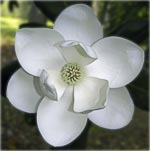Mount Pleasant Plantation – Yemassee – Beaufort County
Basic Information
- Location – Combahee River, Yemassee, Prince William Parish, ACE Basin, Beaufort County
Located south of the Town Yemassee off River Road on Auldbrass Plantation Road
- Origin of name – ?
- Other names – Pleasant Hill, Old Brass, Auldbrass
- Current status – Part of Auldbrass Plantation which is privately owned
Timeline
- 1736 – Earliest known date of existence
Charles Barker received a royal grant for 474 acres on the south side of the Combahee River.
- 1737 – Charles Barker sold his grant of 474 acres to James Hartley
- 1748 – James Hartley sold the land to John Deas. John Deas made his home on the property and he probably built a house, however, no records have been found to verify this. An inventory of his estate shows he grew rice and indigo (Linder, p. 421).
John Deas had no children so he left his plantation to a friend, John Deas, who was possibly named for him.
- 1759 – John Deas (friend) added acreage to his inherited property. He purchased 446 acres from John and Judith Ellis.
- 1790 – John Deas (friend) accepted British protection after the fall of Charleston. His lands were confiscated by South Carolina government and he had to pay a 12% amercement tax. That same year John Deas (friend) died and his wife, Elizabeth, sold the plantation to John Alexander Ogilvie. Ogilvie called the property Mount Pleasant and incorporated it into Richfield Plantation (Linder, p. 423).
- 1799 – John Alexander Ogilvie mortgaged the two plantations and was then unable to pay off the mortgage. A group of four investors (Isaac Teasdale, Alexander McDowell, Edward Trescot, and George Parker) bought the plantations (Linder, p. 423).
- 1803 – Isaac Teasdale and Alexander McDowell bought out the other investors. They sold Richfield to Nathaniel Heyward but it is unknown if and when they sold Mount Pleasant.
- 1834 – Mount Pleasant was listed in the will of James Elliott McPherson as Pleasant Hill. His widow, Elizabeth Skirving McPherson, managed Pleasant Hill along with her Brewton Plantation.
- 1859 – Elizabeth Skirving McPherson could not keep up payments on the plantation debt and was forced to sell. John H. Screven purchased Pleasant Hill (Linder, p. 424).
- 1864 – John H. Screven sold 700 of 1,022 acres of Pleasant Hill to Williams Middleton. In his deed, Screven refers to his plantation as Old Brass (Linder, p. 424).
Tradition holds that the name Old Brass came from a slave named Brass whose heritage was part Native American.
- 1883 – Williams Middleton died and his wife, Sarah Pringle Smith Middleton, continued to manage the plantation.
- 1899 – Sarah Pringle Smith Middleton sold Old Brass to James U. Jackson. About the same time Jackson also bought Old Combahee and Mount Alexander (Linder, p. 424).
- 1903 – Jackson gave 1,000 acres to the Combahee Hunting Club. The rest of the acreage changed hands numerous times among various timber companies (Linder, p. 424).
- 1910 – The Combahee Hunting Club sold the 1,000 acres to J.R. Paschall and Thomas Gresham. The property changed hands several times before it was owned by C. Leigh Stevens.
- 1938 – C. Leigh Stevens reorganized the Savannah River Lumber Company, and as a fee for his services the company gave him several tracts of land. C. Leigh Stevens combined Old Brass (formerly Mount Pleasant), Mount Alexander, Charlton, Richfield, and Old Combahee to form a large piece of property. He then commissioned Frank Lloyd Wright to build a plantation complex that represented a working farm. Frank Lloyd Wright is given credit for naming the complex Auldbrass (Linder, p. 425).
- 1962 – C. Leigh Stevens died and left the plantation to his son and daughter. Jessica Stevens Loring bought out her brother and was the sole owner of Auldbrass.
- 1979 – Jessica Stevens Loring sold Auldbrass. At some point a hunt club owned the plantation and used the house as a lodge.
- 1987 – The Beaufort County Open Land Trust acquired the property and sold it to Joel Silver with the agreement that it would be open for tours on occasion. The buildings had been neglected for some time and were in poor shape. Silver began to restore the buildings. He still owns Auldbrass today. For more detailed info on the plantation complex created by Frank Lloyd Wright, please see Auldbrass Plantation.
Land
- Number of acres – 474 in 1736; 920 in 1759; 1,022 in 1859; 700 in 1864
- Primary crop – Rice and indigo
Owners
- Alphabetical list – Charles Barker; Beaufort County Open Land Trust; Combahee Hunting Club; John Deas; John Deas (friend); Thomas Gresham; James Hartley; James U. Jackson; Jessica Stevens Loring; Elizabeth Skirving McPherson; James Elliott McPherson; Williams and Sarah Pringle Smith Middleton; John Alexander Ogilvie; J.R. Paschall and Thomas Gresham; John H. Screven; Joel Silver; C. Leigh Stevens
Slaves
- Number of slaves – 29 in 1748 (John Deas)
Buildings
Web Resources
- Tours of Auldbrass
- National Register of Historic Places
– Nomination form - PDF - submitted in 1975
– Photographs, architectural overview
Print Resources
- Claude Henry Neuffer, editor, Names in South Carolina, Volume I through 30 (Columbia, SC: The State Printing Company)
 Order Names in South Carolina, Volumes I-XII, 1954-1965
Order Names in South Carolina, Volumes I-XII, 1954-1965
 Order Names in South Carolina, Index XIII-XVIII
Order Names in South Carolina, Index XIII-XVIII
- Suzanne Cameron Linder, Historical Atlas of the Rice Plantations of the ACE River Basin - 1860
(Columbia, SC: South Carolina Department of Archives and History, 1995)
 Order Historical Atlas of the Rice Plantations of the ACE River Basin - 1860
Order Historical Atlas of the Rice Plantations of the ACE River Basin - 1860
Contact Information
- Beaufort County Open Land Trust
PO Box 75
Beaufort, SC 29901
Telephone: 843-521-2175
Website: Click here


